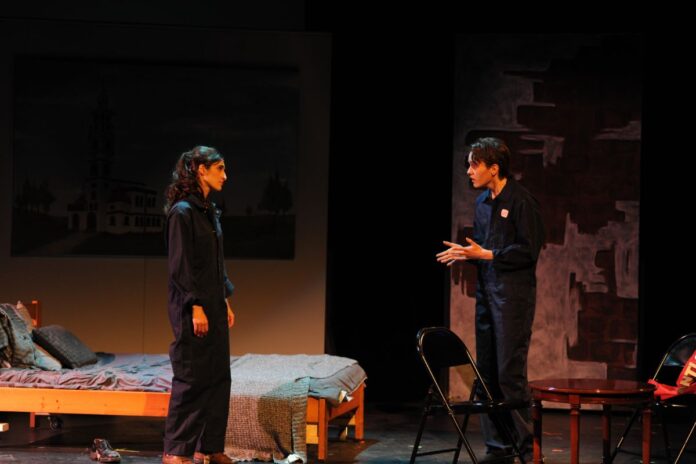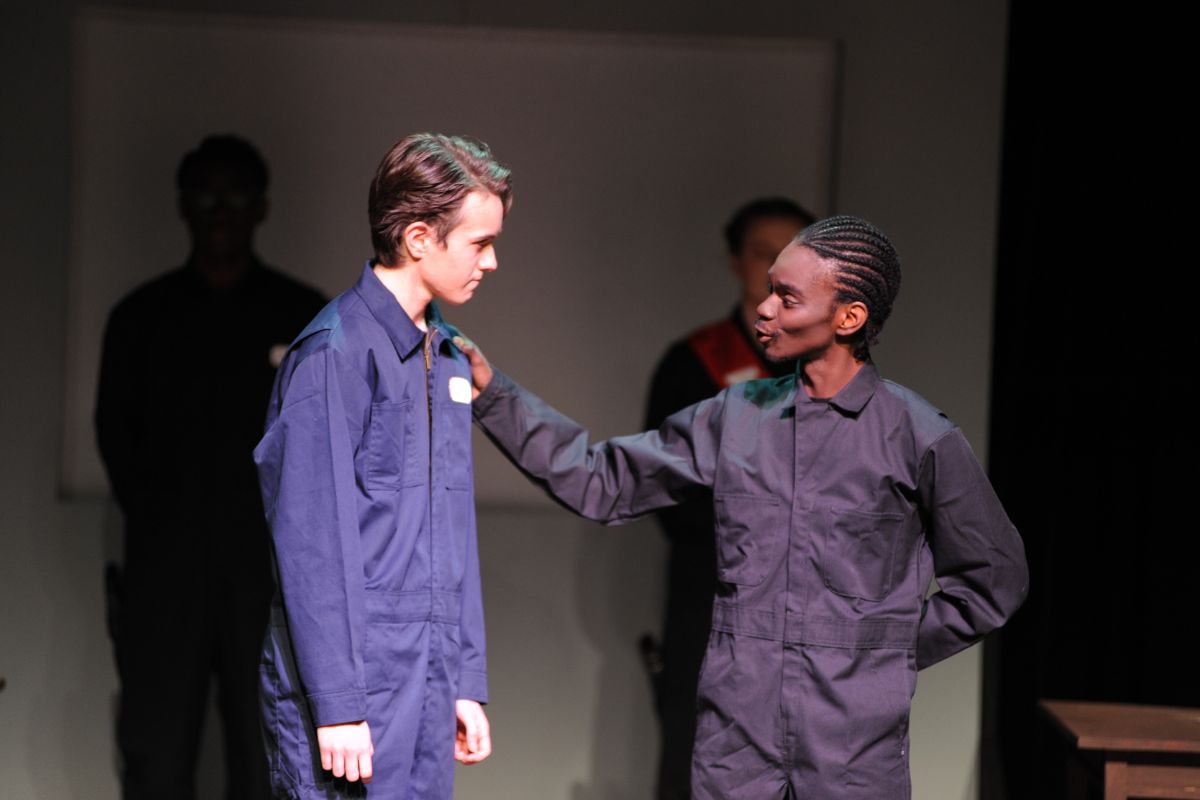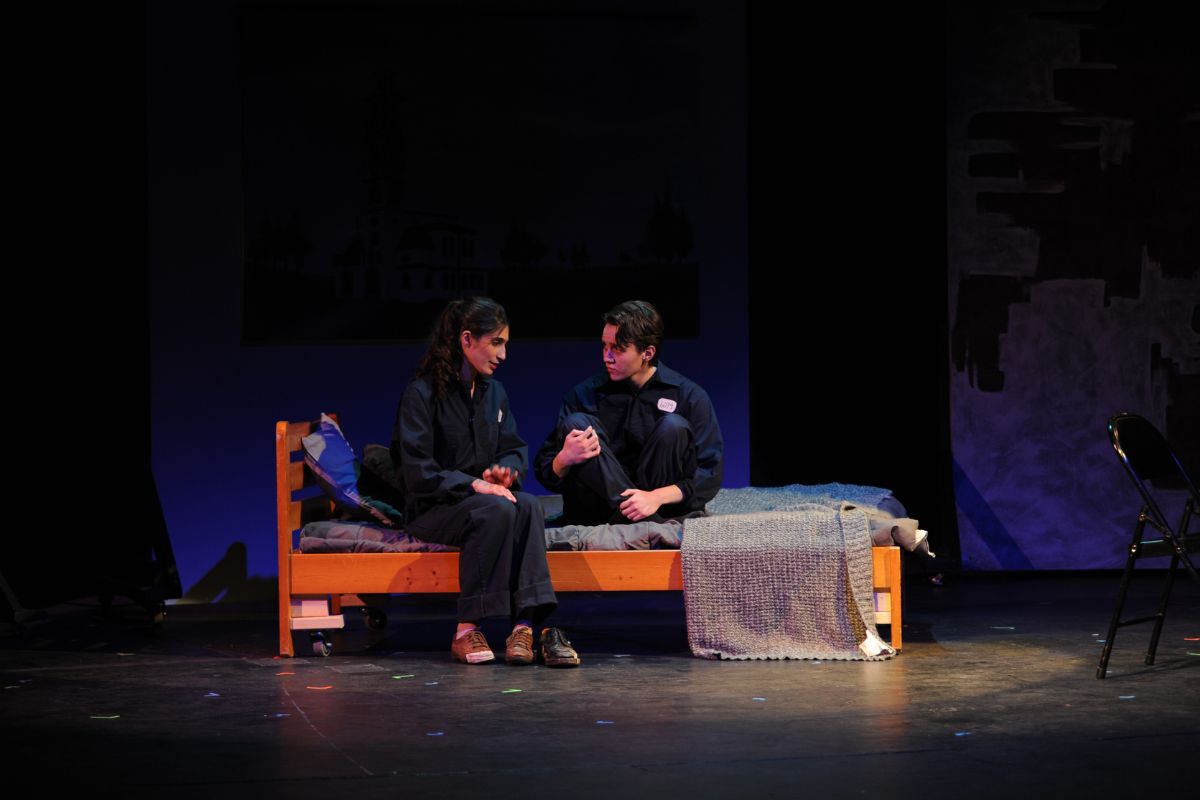
In a dystopian society, Winston is a cog in a utilitarian machine. This world operates under the constant surveillance and censorship of the Party, and its leader, Big Brother. People are told what to say, what to do and even how to think.
Tired of living under prying eyes, protagonist Winston rebels to find love and freedom in a world of captivity. What follows is an iliad of betrayal and brainwashing, as Winston fights for his personhood.
1984 is a classic George Orwell novel read in virtually every high school English class. It’s also the play kicking off Sock ‘n’ Buskin’s 2024-2025 season from Nov. 14 to 17.
What makes 1984 an all-time classic is the story’s ability to take outlandish concepts and root them in real-world matters. On the surface, propaganda being spoon-fed 24/7 to society through a telescreen monitoring people’s every move is seemingly far-fetched — but is it?
The point of the narrative is not to convince us the same thing is happening in reality. Instead, 1984 wants us to be aware of, criticize and question the world around us.
This is where Sock ‘n’ Buskin is insistently on-point with its stage adaptation. From start to finish, director Isabella Paterson uses an isolating stage layout to remind the audience that collective power is key.
Set designers Kennedy Chan and Zane Labonté-Hagar intentionally set up most scenes around a massive screen that projects propaganda and surveils characters. The deliberately simplistic stage layout of mismatched furniture and bare walls emphasizes the dystopia and allows the mysterious screen to take centre stage.
On the screen, projections of countless random faces and voices morph into a singular identity, terrifying combining sound, lightning and artistic cues. Big Brother, we learn, is everyone and also no one. He is never seen and rarely mentioned, but his looming presence makes the non-existent character an eerie favourite.
The cast is a unique mix of first-timers with the company, as well as veterans.

O’Brien is a difficult character for any actor to portray, but no one could balance the mystery of 1984’s Big Bad better than Donovan Martin. Martin brings a commanding presence as a drill sergeant caricature, but by the time the curtain falls, he is a cruel and cunning puppet master.
Corey Newman as Winston brought the perfect amount of hysteria to his character as Winston is freed from his glass cage, only to be forced right back into it.
Newman’s on-stage chemistry with Sock ‘n’ Buskin newcomer Alina Haddad as Julia was passionate and set the pace for the performance. Julia, a free-spirited woman against the party, runs away with Winston, with their love for each other being propelled by their hatred for the state.
Julia may have been Haddad’s debut role with Sock ‘n’ Buskin, but her past theatre IQ helped her fit right in with the seasoned members. Although the cast shared great chemistry, it was often overshadowed by dialogue that was too preppy and cliché for a dystopian play.
In some scenes between Winston and Julia, stiff line delivery caused the audience to laugh at scenes that warranted a more sombre tone. Although humour provides much-needed catharsis to a heavy performance, the overreliance made the first act feel at times like a romantic comedy.

Intense music and dramatic lighting could have been used more often to darken the tone, helping the audience clue into how they were supposed to react.
Because 1984 is a smaller production, the performance relied on each character pulling their weight. With a cast of only 10 characters, it’s impossible to convince the audience of the hive-mind mentality that’s infected a whole population when there are never more than eight characters on stage at once.
This made the beginning feel one-dimensional, as the world of 1984 is too complex to be fully mastered by a small production. However, the production’s intimacy also makes the final act extremely powerful, as the audience is left alone with Winston and his crumbling psyche. These scenes demanded very little, apart from a creative multimedia approach and raw acting from Winston, which Sock ‘n’ Buskin expertly delivered.
Technically, late cues and unnatural effects polluted most of the performance. Minor errors like a rat scurrying sound played irregularly and a prominent silhouette of the stagehand closing the curtain constantly stained standing-ovation-worthy scenes.
Although the errors were inconsequential individually, they piled up fast and painfully reminded the audience they were in a theatre watching a play, instead of immersed in Winston’s world.
Excellent set design and stellar acting drove the plot forward in Sock ‘n’ Buskin’s 1984, but the adaptation proved too demanding for a smaller company, with minor issues slowly corroding the overall performance and its message.
Featured image by Zane Labonté-Hagar.





